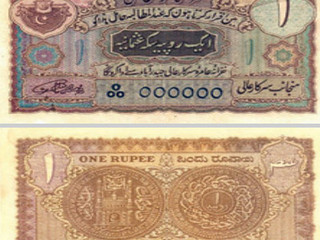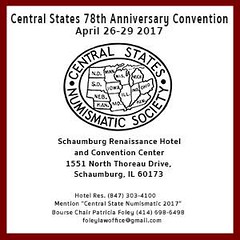
PREV ARTICLE
NEXT ARTICLE
FULL ISSUE
PREV FULL ISSUE
ROYAL MINT MUSEUM OF HYDERABAD PROPOSEDThis article published August 4, 2017 by The Times of India discusses a proposal for a coin and currency museum in Hyderabad. -Editor
Heritage activists demand that the old mint building in Saifabad should be converted into a numismatics and royal mint museum of Hyderabad with access to the common man. While the mints elsewhere simply stuck coins, the Hyderabad mint of the Nizam's time produced even traffic signals, medals, badges and other memorabilia. Most of them have been consigned to scrap while a few now form part of a private collection of expert numismatics. Incidentally , this is the centenary year of the introduction of paper currency in Hyderabad. The Hyderabad Currency Act (19171918 CE) got the approval of the Nizam VII, Mir Osman Ali Khan on June 4, 1918. And this was the first time that paper currency was introduced in the princely state of Hyderabad. Till then, only coins with the highest denomination of Re 1 were in circulation. All of them were stuck in silver and they were worth their weight in metal. Initially, coins were minted and as the princely state faced severe shortage of metal during the World War I, Hyderabad shifted to paper currency . The Nizam got the notes printed in England. Later, the notes were printed at the royal mint as well as Central Press (Government Printing Press, Malakpet) during the World War II. The Nizam ensured that the money printed in England did not fall into wrong hands before the bundles of currency arrived in Hyderabad. The notes would carry all the details except the mandatory signature of the finance member, without which the notes are invalid.The signature was printed in Hyderabad before formal release into the market. The Nizam first issued 10 and 100 notes in 1918. As the high value notes did not get people's support, the Nizam later introduced 1 and 5 banknotes in 1919. The 1,000 banknote was issued in 1926. The Re 1 note was turned down by people as it was black. Many considered black as inauspicious and refused to accept it.The Nizam was forced to withdraw the black note within a year of its introduction. It was thus the first ever demonetisation of a banknote in Indian history . To read the complete article, see: Wayne Homren, Editor The Numismatic Bibliomania Society is a non-profit organization promoting numismatic literature. See our web site at coinbooks.org. To submit items for publication in The E-Sylum, write to the Editor at this address: whomren@gmail.com To subscribe go to: https://my.binhost.com/lists/listinfo/esylum All Rights Reserved. NBS Home Page Contact the NBS webmaster 
|


